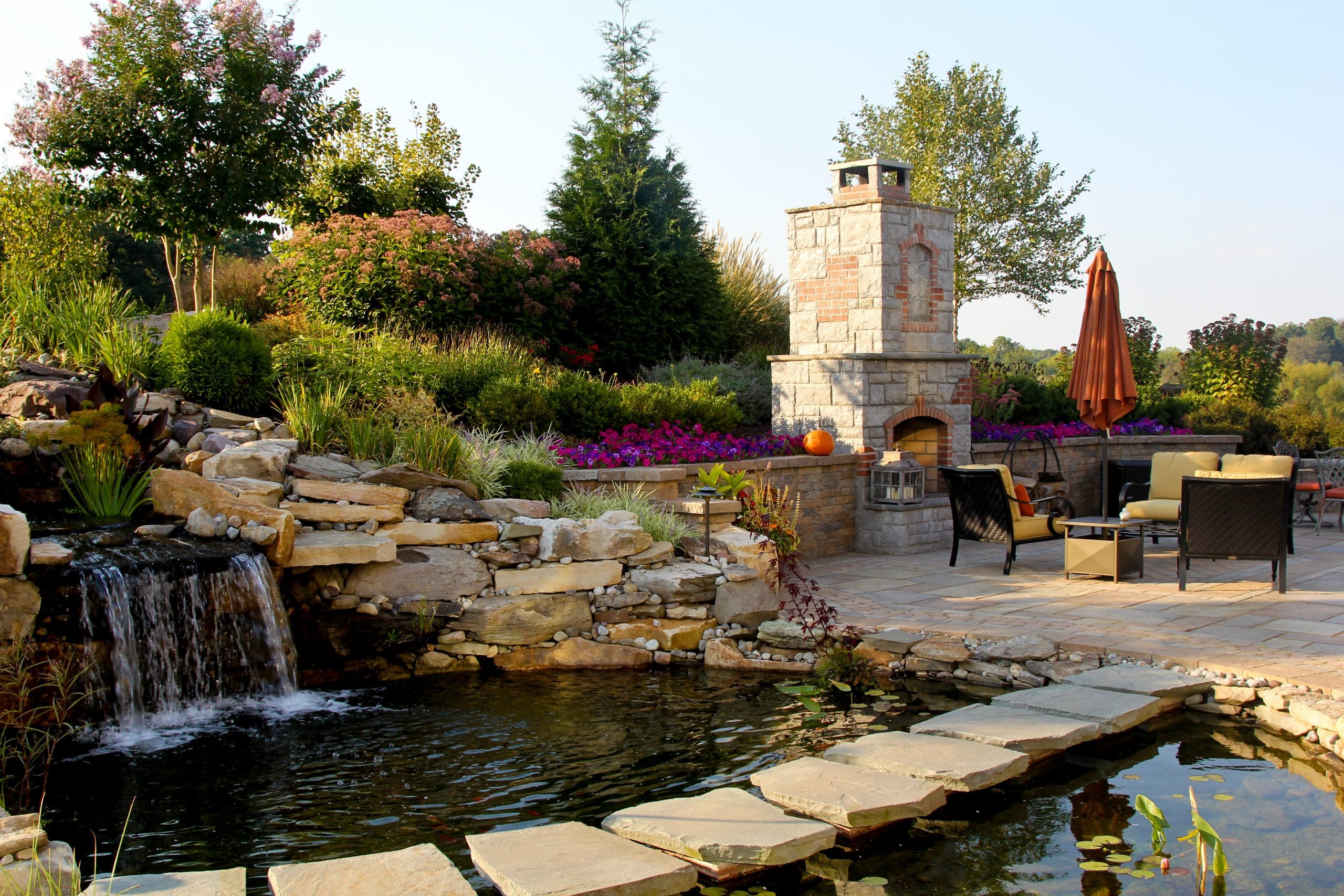
COVID-19 has impacted many facets of life and it even shifted the landscape trends in 2020. As we prepare to head into 2021 here are some of the residential landscape trends professionals expect to see going strong next year.
Outdoor Entertaining Areas
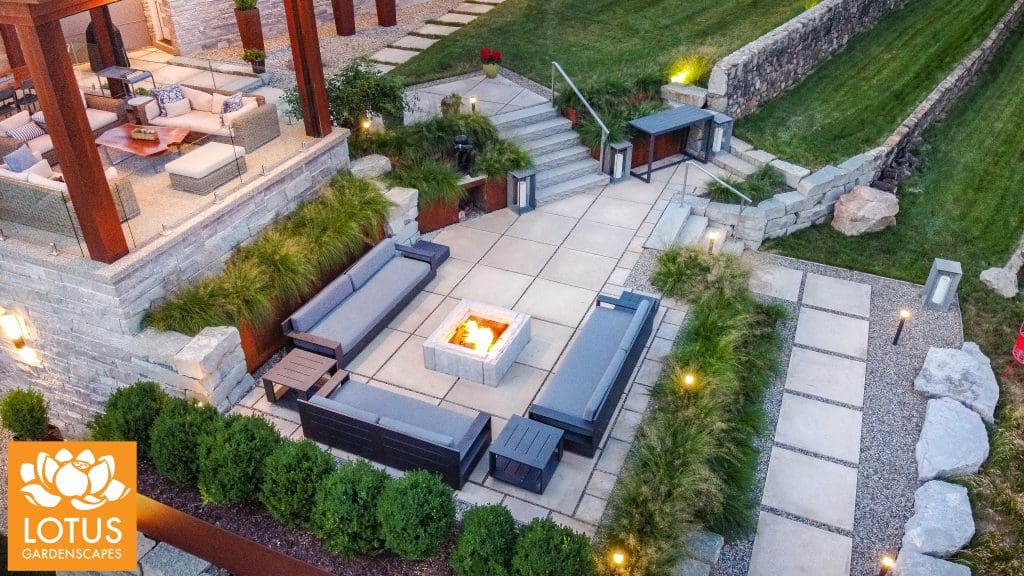
Outdoor rooms have been popular for years now and commonly pop up on trend prediction lists but now these spaces are receiving a new level of appreciation due to the pandemic.
Glenn Jacobsen, LIC, president of Jacobsen Landscape Design & Construction, Inc., based in Midland Park, New Jersey, says his company had several projects this year where they created separate spaces that were designed to hold six to eight people in different parts of the landscape.
“I think it’s (COVID-19) going to affect people’s mindset quite a bit on outdoor entertaining,” Jacobsen says. “People have actually found the benefit of it, being outdoors more. People really found out the utility value of using your backyard for entertainment.”
Features that allow people to gather as a family will be particularly popular, such as fire pits, patios, outdoor kitchens, and even open green spaces where families can play games. Pools, in particular, have exploded in demand.
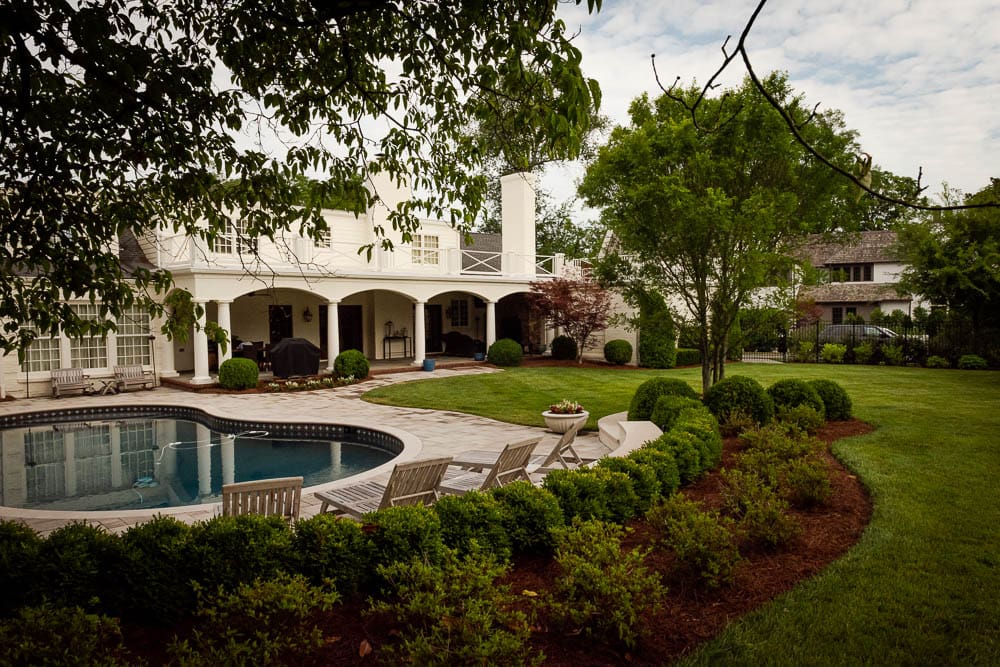
“Pools are definitely one of the biggest demand items in our market right,” says Joe Markell, LIC, president of Sunrise Landscape + Design, based in Sterling, Virginia. “I think that’s going to continue because the public pools are all closed because of COVID. People enjoy being at home and having that option.”
Markell says he expects to see people continuing to invest in their homes next year as this is where they will be spending most of their time.
“They’re staying home so therefore they’re sitting there looking at their windows going ‘Gee, what can we do to improve our environment at home?’” says Lee Greathouse, LIC, CEO of The Greathouse Company based in Nashville, Tennessee. “So, we’ve just seen a huge increase in that trend for outdoor dining, entertaining, living spaces.”

Another design aspect of outdoor rooms that will be in high demand is the sanctuary effect or cocooning. Traven Pelletier, owner and designer of Lotus Gardenscapes, based in Dexter, Michigan, describes this as creating a place where a person can feel at peace.
“Since everybody’s been sheltering in place this year and their travel budgets are basically sitting in their accounts, and they’re stuck at home a lot more people are investing in their own residential space and trying to create some sort of outdoor sanctuary for themselves,” Pelletier says.
Adding privacy screens, pergolas, water features or simply beautifying the landscape with plantings all help create a soothing and healing space as people look for a place where they can separate themselves from work and schooling being at home now.
“We’re hearing a lot of homeowners saying that their company’s not letting anyone come back to the office until June or July of ‘21,” Greathouse says. “So, I think that will continue. I think that will influence a lot.”
Even in urban areas, Greathouse says people are adding these landscape features to their rooftops.
“We’ve got a lot of condos where they’re creating green spaces around their pools and areas where they’re enhancing the rooftop much more with all the amenities like pools and spas and outdoor kitchen spaces,” he says.
Stay-At-Home Effects
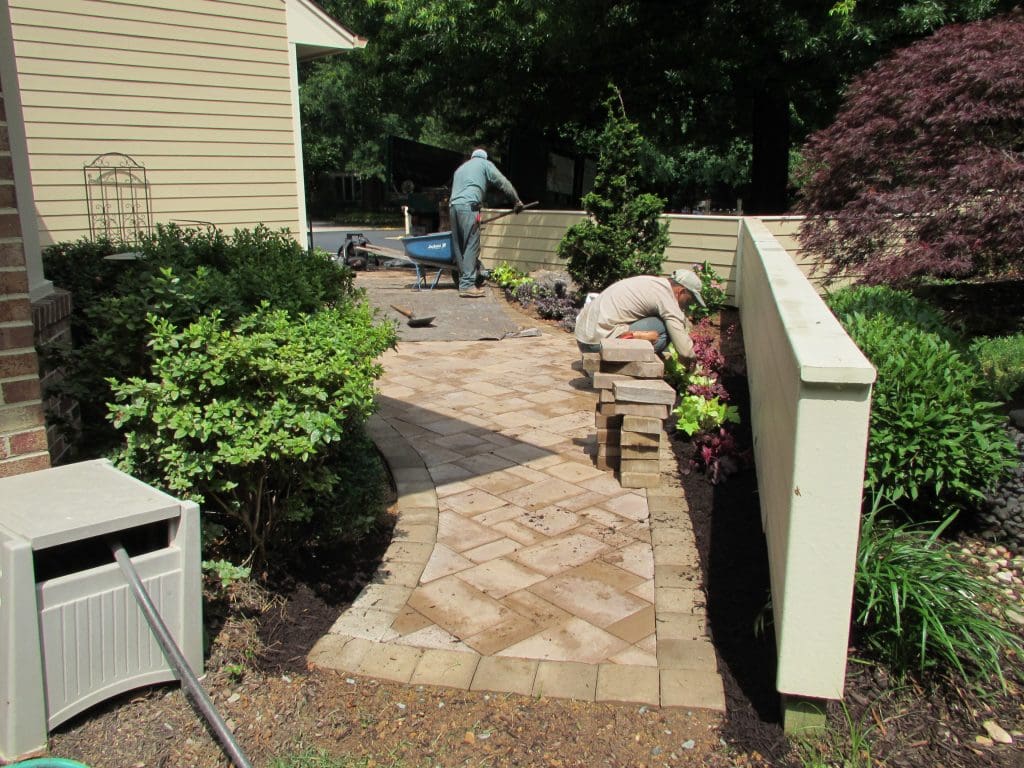
With more people staying at home there has been an increased amount of people trying their hand at DIY projects, but most of the landscapers agree, when it comes to the larger landscape jobs, they’re still turning to the professionals.
“The scope of these projects are not DIY projects,” Markell says. “I think there are homeowners who are doing a lot themselves because they want to try it or do it, but I think the bigger thing is having a professional do it because this is now an investment because they’re going to sell later that’s going to be important.”
Jacobsen says the demand is so high due to customers having more funds to put into their properties and they’re booking jobs a lot earlier. Greathouse agrees that customers are using their unspent travel funds to hire landscaping companies.
“We’re actually working through winter on several projects,” Jacobsen says. “They want to be able to use their properties in the spring. We’ve had a strong year.”
All four landscapers expect some level of plant material shortages with the DIYers, but nothing too major.
On the maintenance side of things, Pelletier says people at the middle-income range are more likely to take on the maintenance of their properties themselves while high-income clients will keep using professional services.
Jacobsen says he’s seen some people take on some of the landscape maintenance such as spreading mulch and planting flowers just because they have more time on their hands. He says others have been putting their kids to work outside.
Even though more people are at home, Greathouse says they broke records with their maintenance this year.
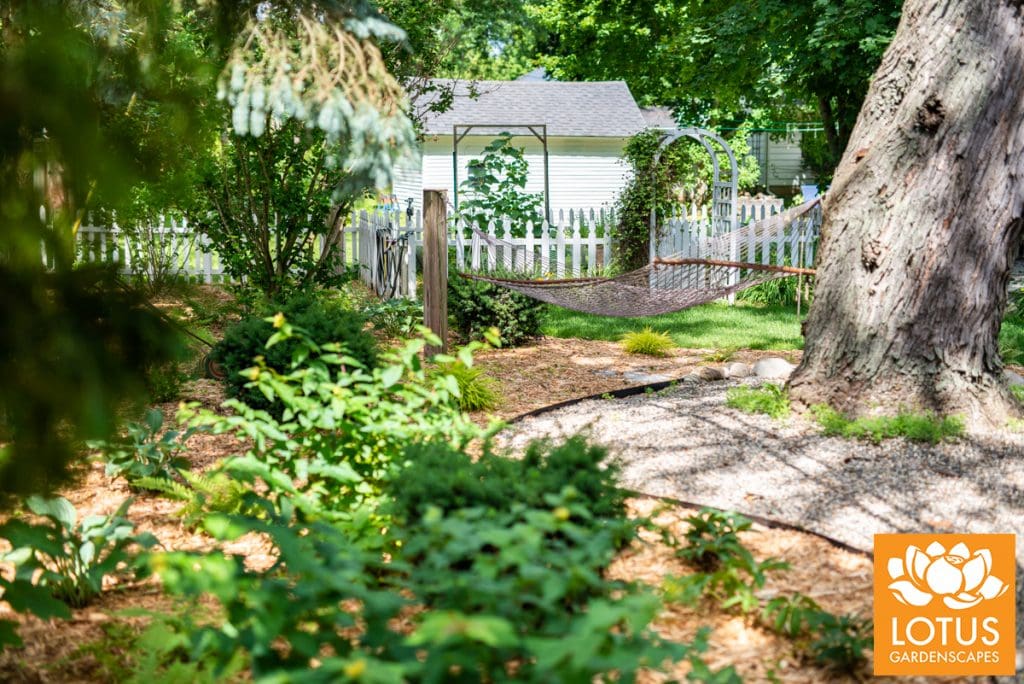
“Their time is valuable,” Markell says. “They’re either working a lot more or want to spend time enjoying not working. In our area we have a lot of professional people who spend a lot of time at work and don’t want to work when they come home. They just want it to look good and they’re willing to pay for that.”
Both Greathouse and Pelletier have experienced increased interest from customers when it comes to creating spaces for edible gardens. Lotus Gardenscapes added raised garden beds as a pre-sale item on their website right before COVID-19 hit and Pelletier says they’ve installed a lot more this year.
“The property has to be proper for it,” Jacobsen says. “It has to have a lot of sun, has to have the right location. To be honest, the vegetable garden is not the most economical thing. If you want to do it because it’s a labor of love then do it, but it’s cheaper going to the farmers market.”
Tech in the Landscape
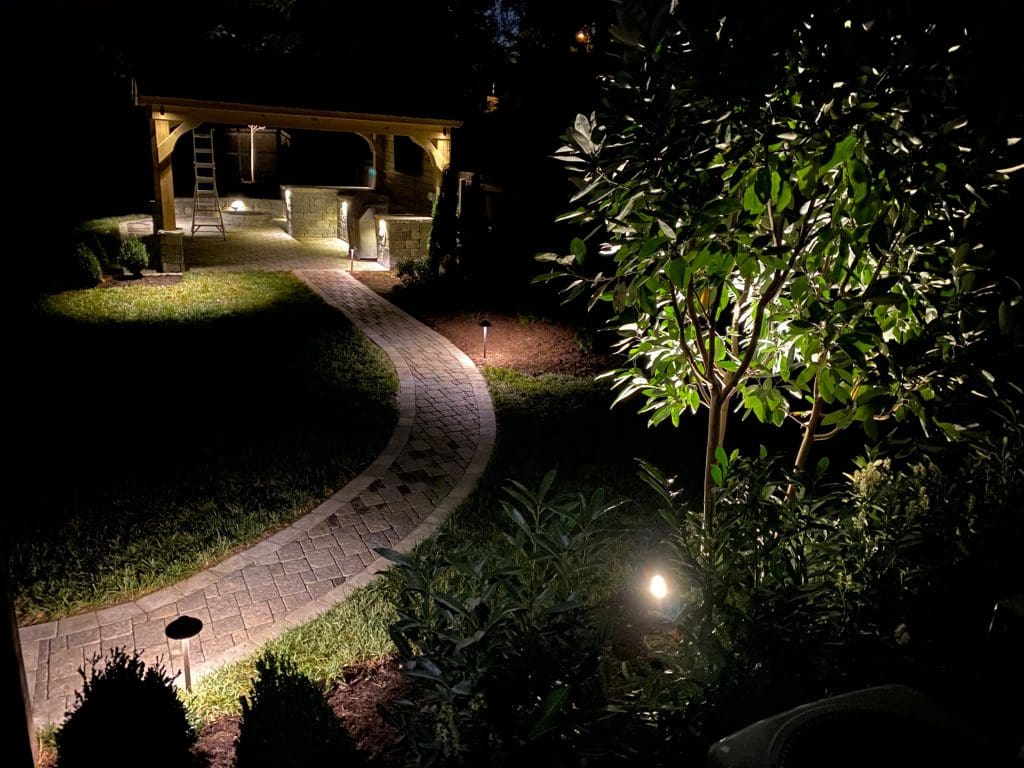
Another trend landscape professionals are expecting to see in 2021 is increased integration of technology in the landscape. This includes a broad spectrum of options including outdoor lighting, smart irrigation systems and outdoor sound systems.
Pelletier expects more clients to add lighting to their properties, as it extends the amount of time they can spend enjoying their outdoor spaces.
“All the contractors should be putting a line item on their proposals and just trying to sell it,” Pelletier says.
Both Jacobsen and Markell say they include outdoor lighting as an option for customers when doing a proposal.
“We, as a rule, if we’re designing a landscape, we put it in as an option,” Markell says. “I feel like that’s an extra element to the design and enhances the overall enjoyment of the project. I mean it just adds a whole other dimension, not only for safety but just the design element and just people really love it at night to look out in their yard and see the trees and stuff lit up.”
Jacobsen says they’ve been installing smart irrigation controllers now for probably 10 years, but in the past two or three years, they’ve been more well-received by customers. Greathouse says they do not install any controller if it is not smartphone compatible.

“All that integration customers love it, especially when you have a tech-savvy community,” Markell says. “You can offer an option with that and they’ll eat it up.”
Pelletier cautions adding lots of technology to the landscape depends on the clients as he’s had some $4-million-dollar house clients that are very tech-savvy not want it in their backyard because they’re already inundated with it.
“Maybe the area that’s probably the cooler area that could continue to grow I think is outdoor sound,” Pelletier says. “As people push more outside and do these more expansive sanctuary spaces or outdoor rooms having sound in it is the natural progression.”
Markell says the sound systems sound fantastic and can be tucked away in the landscape for any entertainment area.
“It really allows people to customize their own backyard with their own music and sound,” Markell says
Increased Environmental Awareness
Another set of trends is increased customer awareness of different environmental issues, but the demand for these really depends on where your market is based. These trends include a desire for more native plants, pollinator gardens, water conservation and organic lawn care.

“I think in general there’s more knowledge about it and people are more concerned,” Pelletier says. “People that are really into their gardens are wanting pollinator gardens and native gardens. That’s a good niche designed to be able to sell.”
Markell says while native plants work in certain situations, they aren’t appropriate for the design of every house.
“I think it depends on the situation,” Markell says. “We also have some of our clients that are more in the woods so there you might have a little bit more ability to use more native plants.”
As for water conservation concerns, it tends to be a regional issue. Jacobsen says their clients have become more water conscious as of late as the water prices have gone up recently. Markell says he encourages his clients to run their irrigation systems less frequently when they ask how to save money.
Greathouse says there’s been a growing demand for organic lawn care, but they haven’t explored it much at the moment.
“Our concern is if you went true organic the client is not going to be happy with what you can do and you’ve got to interject some chemicals,” Greathouse says. “We try to make that clear and some people just want to go the whole organic route.”
Markell says they opt for integrated pest management practices and are mindful to use the least amount of pesticides.
“I think as an industry it’s our responsibility somewhat to help mitigate what the customer doesn’t know,” Markell says. “The organics are great but if they’re not effective and how good is that in the long run?”


Comments are closed.